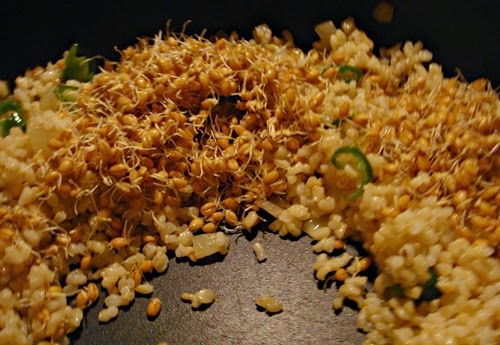| The above two photos don't do justice to our delicious, wintery, rib-sticking Lentil Loaf, served with an escarole salad and garlic bread. Many lentil and bean loaf recipes involve a burdensome ingredients list and the hassle of separately pre-cooking at least two elements. Not this one, which can also be turned in to lentil burgers; instead of baking in a loaf pan, simply pan-fry over medium heat, in 2 T. of olive oil, for about 3-4 minutes per side. This is how we do it: in a food processor or blender, place 2 cups cooked lentils (regular brown lentils), 1 chopped onion, 3 cloves of garlic 1/2 cup rolled oats, 1 egg, 1 T. Worcestershire sauce and plenty of salt and pepper to taste. Puree until you just have a moist, well-combined mixture. A matter of seconds. A 14-oz. can of cooked lentils (or chickpeas) can be substituted for the two cups of home-cooked lentils. Now just pat the mixture into a well-oiled loaf pan, cover with foil and bake at 350 degrees F for 30 minutes. Remove the foil and bake an additional 30 minutes. Allow to cool slightly before slicing and serving with anything, from mashed potatoes and gravy to ketchup and mustard. |































Comments